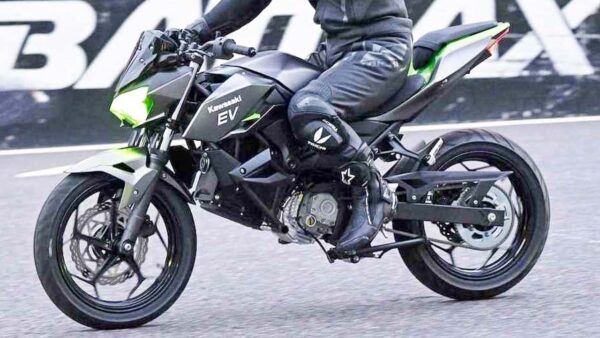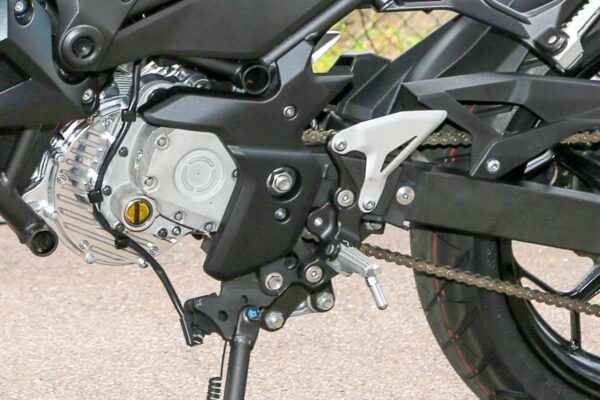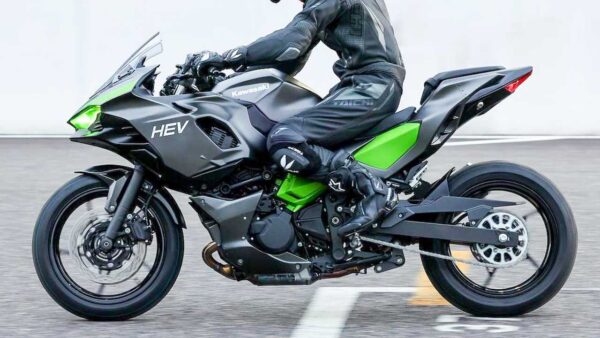By 2035, Kawasaki plans to have a fully electrified portfolio that will include pure EV and hybrid electric vehicles

Providing a glimpse of what the future would look like at Kawasaki, two new bikes, one electric (EV) and one hybrid electric vehicle (HEV) recently raced the tracks at Suzuka Circuit. Widely popular Suzuka 8 Hours endurance racing event was purposefully chosen to ensure maximum reach for Kawasaki’s all-new electrified bikes.
In addition to the visual treat, enthusiasts also got to listen to the aural notes of these bikes. EV bike had the typical hum of an electric motor whereas the HEV sounded more like a conventional ICE-based bike.
As Kawasaki’s electrification plans have been delayed due to the pandemic, it is likely that things are being expedited in a proactive manner. While official timelines have not been announced, launch in markets like America can happen by the end of this year.
Kawasaki electric bike features
Kawasaki’s pure-EV bike appears to borrow styling bits from Z range motorcycles. Some key features include an aggressive front fascia, sinewy fuel tank design, step-up split seats, prominent tail section, standard telescopic front forks and rear swingarm. The bike has a fairly committed riding stance with low-set handlebar and slightly rear-set footpegs.

With close to zero body panelling, Kawasaki’s new all-electric bike should be able to extract more miles from the battery. It is not clear at this point of time if the battery is a fixed or removable unit. It looks completely packed from the sides, although there could be an opening in the fuel tank casing to reach the battery from top. VIN information shows that Kawasaki’s all-electric bike generates 15 PS of max power. It is likely to be slotted between Z125 and Z250.
Kawasaki HEV bike features
In comparison to the naked EV, Kawasaki HEV bike is a fully-faired model. It appears to have design bits similar to that of the Kawasaki Ninja range. Some key features include sharp dual headlamps, compact windscreen, sharp panels, step-up seat and upswept exhaust. It is evident that the bike has a twin-cylinder motor and exhaust is quite similar to that of Ninja 250. Multiple air intakes can be seen, which will work to cool the motor and battery system.
Other key equipment in use are conventional telescopic forks at front and monoshock rear suspension. Braking setup has dual discs at front, which looks impressive and should help manage the additional bulk of the hybrid system.

Considering India’s growing appetite for electric two-wheelers, Kawasaki should not take too long to launch its electric range here. Sooner the better, as rivals like Honda, Suzuki, Yamaha and KTM are planning their respective electric two-wheelers for India. Kawasaki will also have to work on pricing to be able to play the volume game.

